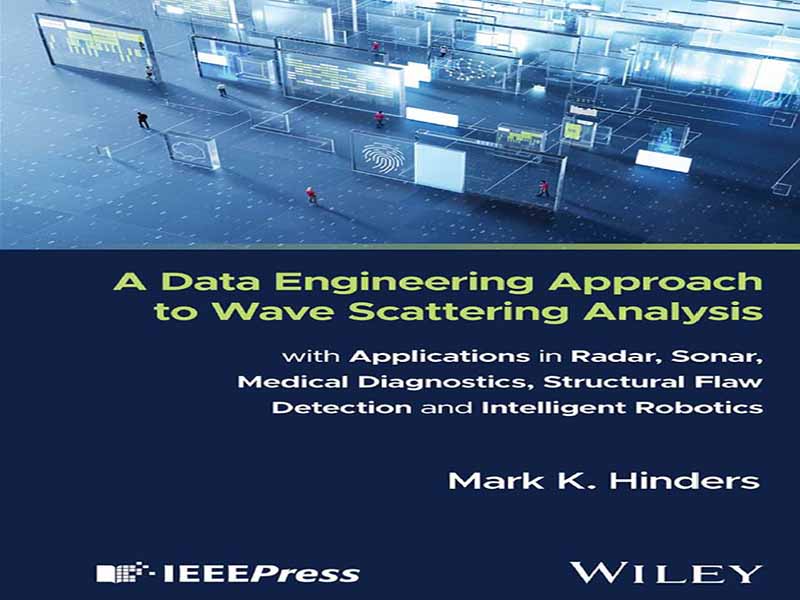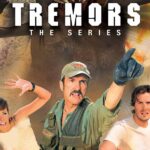- عنوان کتاب: A Data Engineering Approach to Wave Scattering Analysis -with Applications in Radar, Sonar, Medical Diagnostics, Structural Flaw Detection and Intelligent Robotics
- نویسنده: Mark Hinders
- حوزه: تحلیل امواج, رادار
- سال انتشار: 2025
- تعداد صفحه: 369
- زبان اصلی: انگلیسی
- نوع فایل: pdf
- حجم فایل: 11.3 مگابایت
در این کتاب، تحلیل پراکندگی در موارد به ظاهر متفاوتی به کار گرفته شده است، از جمله اما نه محدود به موارد زیر: ● رادار: بمب اتم ممکن است جنگ جهانی دوم را پایان داده باشد، اما رادار آن را برد. رادار بریتانیا را به اندازه کافی در جنگ نگه داشت تا زرادخانه دموکراسی کاملاً وارد بازی شود. پس از پایان جنگ سرد، افراد فعال در زمینه پراکندگی رادار، بازیهای ویدیویی را واقعگرایانه و تلفنهای همراه را قابل اعتماد کردند. ● سونار: برای دههها، انسانها سخت تلاش کردهاند تا تواناییهای ذاتی پستاندارانی مانند دلفینها، نهنگها و خفاشها را که از طریق پژواک موقعیتیابی میکنند، کپی کنند. پراکندگی آکوستیک چیزی بیش از یک نسخه اسکالر از الکترومغناطیس است. ● تشخیص پزشکی: تصاویر سونوگرافی، ماموگرافی و غیره “برشهای” دوبعدی از آناتومی سهبعدی هستند. پزشکان در تفسیر آنها متخصص هستند، اما تشخیص هنوز کاملاً ذهنی است. یادگیری ماشین میتواند با برجسته کردن ویژگیهای مشکوک در سیگنالها به پزشکان کمک کند. ● تشخیص نقص ساختاری: تکنسینها به اندازه پزشکان در تشخیص بیماری آموزش ندیدهاند، به علاوه هیچ «آناتومی» استانداردی وجود ندارد و ساختار نمیتواند تشخیص دهد که کجا آسیب دیده است. برای بسیاری از کاربردها، یادگیری ماشین میتواند با شناسایی خودکار نقصهایی که میتوانند منجر به خرابی ساختاری شوند، رهبری را به دست گیرد. ● بازرسی آنلاین: مهندسان فرآیند نمیخواهند تصاویر را تفسیر کنند. آنها میخواهند که ابزار دقیق در صورت خوب بودن فرآیند، چراغ سبز و در صورت خارج از مشخصات، چراغ قرمز نشان دهد. تفسیر خودکار و بلادرنگ سیگنالهای پیچیده نظارت بر فرآیند اکنون قابل انجام است. ● رباتیک هوشمند: کلید رباتهای مفید، ترکیبی از حسگرهای تصویربرداری و هوش داخلی برای تفسیر آنها در زمان واقعی است. شما میخواهید به سادگی به ربات بگویید که در درخت بزرگ به چپ بپیچد، نه اینکه مختصات GPS را به آن بدهید. تکنیکهای مدلسازی و کاربردهای آنها که در مورد آنها بحث خواهیم کرد، به فرد اجازه میدهد تا اندازهگیریهای جدید و بهتری را با ابزار دقیق جدید و هوش مصنوعی که تفسیر جریانهای مختلف (و چندگانه) دادههای تصویربرداری را خودکار میکند، پیادهسازی کند. البته ریاضیات سطح بالا نسبتاً زیادی وجود دارد، اما این برای ما خوب است زیرا ما از آن دسته افراد عادی نیستیم که انیشتین گفت «کینهای پنهانی نسبت به حساب دارند». روشهای ریاضی و محاسباتی اساسی که در مورد آنها بحث خواهیم کرد، فراتر از هر کاربرد(های) خاصی هستند. اگر میتوانید رادار انجام دهید، میتوانید سونار، زلزلهشناسی، ارزیابی غیرمخرب و غیره را نیز انجام دهید. این موضوع بسیار مهم است زیرا زلزلههای طبیعی تقریباً هر شش تا هشت سال یکبار رخ میدهند و هر چیز خاصی که در آن تخصص دارید، ممکن است در یک لحظه از حالت عادی به حالت عادی برگردد. این اتفاق از سال ۱۹۸۶ بارها برای من افتاده است و بنابراین در تمام این سالها، من مجموعهای به ظاهر متنوع از تخصص موضوعی را با این طرز فکر که همیشه به دنبال کاربردهای جدید آنچه میدانم و میتوانم انجام دهم، هستم، جمعآوری کردهام. اخیراً متوجه شدهام که گروه فعلی دانشجویان تحصیلات تکمیلی، نسل Z هستند که حداقل از طریق زوم به دانشگاه رفتهاند و اساساً با نسلهای قبل از خود متفاوت هستند. آنها هرگز تمام دانش جهان را در یک دستگاه قابل حمل و نیمه یکبار مصرف که همیشه با خود حمل میکنند، نداشتهاند. یکی از اهداف این کتاب، کمک به اتصال این نسل به ادبیات علمی گستردهای است که مدتها در کتابخانههای قدیمی وجود داشته است، اما اکنون در مکانهایی مانند بایگانی اینترنت برای دانلود در دسترس است، اما تنها در صورتی که بدانید چه منابعی را باید جستجو کنید و به عنوان پایه کتابخانه مرجع شخصی خود استفاده کنید. همچنین ادای احترام به دانشمندان و ریاضیدانانی که زندگی حرفهای خود را صرف توسعه ابزارهایی کردهاند که اکنون میتوانید برای حل مشکلات از آنها استفاده کنید، مهم است. چای ریخته خواهد شد؛ فهرست به گونهای طراحی شده است که امکان خواندن سریع هالیوود را فراهم کند. این کتاب بر اساس یک توالی چند ترمی از کلاسهای تحصیلات تکمیلی است که من به مدت سه دهه ارائه دادهام. من با تایپ کردن یادداشتهای دستنویس خودم شروع کردم و همانطور که پیش میرفتم، بسیاری از دانشجویانم طرحهایی را برای این کتاب به عنوان تمرین در کلاس تهیه کردند. ضمناً، از شما متشکرم. من همچنین در صورت امکان، از تحقیقات پایاننامه دانشجویان تحصیلات تکمیلی خود، با بحث در مورد مشکلات دنیای واقعی که انگیزه تحقیقات آنها بوده است، مثالهایی آوردهام. من عمداً داستانهایی از انواع مسائلی که میتوانند در تحقیقات مشترک شامل چندین محقق و چندین موسسه ایجاد شوند را گنجاندهام. بخش عمدهای از کار ما با همکاری نزدیک با شرکتهای کوچک انجام میشود که چندین مورد از آنها را از استارتاپهای de novo به سرمایهگذاری خطرپذیر یا ادغام و اکتساب هدایت کردهام، اما همیشه از گرفتن هرگونه سهام اجتناب کردهام تا بتوانم از هرگونه دخالتی خودداری کنم و بر انجام کاری که برای پیشرفت شغلی دانشجویانم بهترین است تمرکز کنم. این کتاب قرار نیست یک مرجع جامع در مورد پراکندگی رادار، سونار و غیره باشد. در واقع، من عمداً تکنیکهایی را که اکنون که محاسبات فراگیر با قدرت کافی به این معنی است که میتوانیم سناریوهای پراکندگی سهبعدی واقعبینانه را شبیهسازی کنیم، چندان مهم نیستند، کماهمیت جلوه دادهام. من سعی میکنم خواننده را به متون کلاسیکی ارجاع دهم که در آنها آن حوزههای بالغ تحقیقاتی با جزئیات کامل توسط افراد برجسته مورد بحث قرار گرفتهاند.
In this book, scattering analysis is applied tomany seemingly different things, including but not in any way limited to: ● Radar: The atomic bomb may have ended WWII, but radar won it. Radar kept Britain in the war long enough for the arsenal of democracy to get fully into the game. After the Cold War ended, radar-scattering folks ended up making video games realistic and cell phones reliable. ● Sonar: For decades, humans have been hard at work trying to duplicate the innate abilities of echolocating mammals like dolphins, whales, and bats. Acoustic scattering is more than just a scalar version of electromagnetics. ● Medical diagnostics: Ultrasound images, mammograms, etc. are 2D “cuts” of threedimensional anatomy. Doctors are expert at interpreting them, but the diagnosis is still quite subjective. Machine learning can assist doctors by highlighting suspicious features in signals. ● Structural flaw detection: Technicians are not as highly trained at diagnosis as are doctors, plus there is no standard “anatomy” and the structure can’t tell where it hurts. For many applications, machine learning can take the lead by automatically identifying flaws that could lead to structural failure. ● On-line inspection: Process engineers don’t want to interpret images. They want the instrumentation to give a green light if the process is OK, and a red light if it’s out of spec. Automatic, real-time interpretation of complex process-monitoring signals is now doable. ● Intelligent robotics: The key to useful robots is a combination of imaging sensors and the on-board intelligence to interpret them in real time. You want to simply tell the robot to turn left at the big tree, not feed it GPS coordinates. The modeling techniques, and applications of them, we’ll be discussing allow one to implement new and bettermeasurements with both novel instrumentation and artificial intelligence that automates the interpretation of the various (and multiple) imaging data streams. There’s rather a lot of high-level math, of course, but that’s good for us because we’re not the sort of laymen who Einstein said “have a secret grudge against arithmetic.” The underlying mathematical and computational methodswe’ll discuss transcend any particular application(s). If you can do radar, you can do sonar, seismology, nondestructive evaluation, and so on. That turns out to be pretty important because lifequakes come along about every six to eight years, and any particular thing that you happen to be expert at might go fromhot to not in an instant. That has happened to me repeatedly since 1986 and so all these years later, I’ve accumulated a seemingly diverse set of subject matter expertise with a mindset of always being on the lookout for new applications of what I know and can do. It has recently come to my attention that the current cohort of graduate students are Gen Z, who did at least some college via Zoom and are fundamentally different from the generations that came before them. They’ve never not had all the world’s knowledge in a portable, semidisposable device that they carry with them at all times. One goal of this book is to help connect this generation with the vast scientific literature that has long existed in musty libraries but now is available for download at places like Internet Archive, but only if you know what sources to seek out and use as the basis for your personal reference library. It’s also important to pay homage to those scientists and mathematicians who spent their professional lives developing tools that you can now use to solve problems. Tea will be spilled; the index is designed to allow a quick Hollywood read. This book is based on a multisemester sequence of graduate classes that I’ve been giving for three decades now. I started by typing up my own hand-written notes, and as I was going along, many of my students made plots for this book as exercises in class. Thanks for that, BTW. I’ve also drawn examples whenever possible from the dissertation research of my graduate students, with discussion of the real-world problems that motivated their research. I’ve deliberately included anecdotes of the sorts of issues that can arise in collaborative research that includes multiple investigators and multiple institutions. Much of our work is done in close collaboration with small companies, several of whom I’ve shepherded from de novo startups on through VC investment or M&A, but I’ve always avoided taking any equity stake so I’d be at arm’s length and could focus on doing what’s best for my students’ career progression. This isn’t intended to be a comprehensive reference work on scattering for radar, sonar, etc. Indeed, I’ve deliberately downplayed techniques that aren’t all that important now that ubiquitous computing of sufficient power means we can simulate realistic 3D scattering scenarios. I do try to point the reader to classic texts where those mature areas of research are discussed in great detail by those notables who developed the methods, doing the best they could with the computational power they had available. Once upon a time, of course, computer was a job title.
این کتاب را میتوانید از لینک زیر بصورت رایگان دانلود کنید:
Download: A Data Engineering Approach to Wave Scattering Analysis




































نظرات کاربران